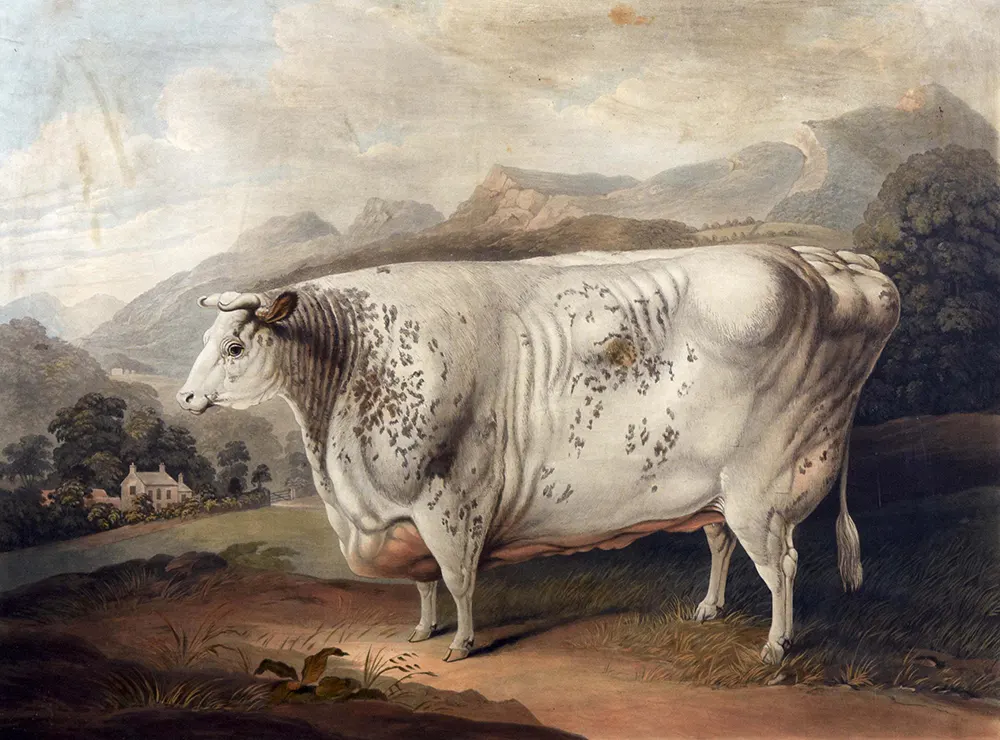In the 19th century, before modern photography and digital marketing, farmers turned to paintbrushes and canvases to display their finest livestock. But these weren’t just ordinary portraits of pigs, cows, and sheep — they were grand, exaggerated, and sometimes almost comically oversized. This fascinating artistic trend reveals much about the agricultural economy, cultural values, and competitive nature of rural communities in the 1800s.
Bigger Was Better

During this time, agricultural fairs and livestock competitions became wildly popular across Britain and America. Winning these shows was a mark of pride, prestige, and financial success. Farmers commissioned artists to depict their prize-winning animals not only as documentation but as promotional tools. To catch the eye and elevate status, they often asked for a little “artistic enhancement.”
Visual Marketing Before the Billboard

Without photography, paintings were one of the only ways to advertise a farm’s best animals. Whether hung in a farmhouse, displayed at a fair, or reproduced in newspapers and agricultural journals, these images served a marketing purpose. A massive, well-muscled bull on canvas promised strength and profitability, whether or not the real animal was quite that imposing.
Exaggerated Proportions

One of the most noticeable elements of these paintings is the exaggerated proportions. Cattle with barrel-sized bellies, sheep with impossibly fluffy coats, and pigs the size of bathtubs were not uncommon. Some artists even used special techniques—like lowering the horizon line—to make animals appear even more colossal. These stylistic flourishes helped communicate abundance and prosperity.
Artists Who Embraced the Fantasy

Painters like Thomas Sidney Cooper and Edwin Henry Landseer gained reputations for their detailed, idealized portrayals of livestock. Though not all artists exaggerated equally, many understood the assignment: make the animal look like the ultimate specimen. Their works often blurred the line between realism and agricultural aspiration.
The Science Behind the Spectacle

Interestingly, these images weren’t entirely fiction. 19th-century breeding practices did produce larger animals, thanks to selective breeding and improved nutrition. However, the paintings tended to amplify those advancements to mythical proportions—turning real agricultural progress into exaggerated visual triumphs.
What These Paintings Say About the Farmer

While we may laugh today at a sheep the size of a pony, these images spoke volumes about the ambitions of their owners. Farmers wanted to be seen as serious breeders, successful entrepreneurs, and proud stewards of the land. A larger-than-life animal was not just a marketing ploy—it was a symbol of identity and accomplishment.
Echoes in Modern Advertising

Although today we rely on high-resolution images and viral videos, the impulse remains the same. We still idealize our products, polish our presentations, and chase visual impact. These 19th-century livestock portraits were the original influencers—oversized, highly stylized, and absolutely unforgettable.
The tradition of painting livestock larger than life offers more than a chuckle at 19th-century artistic liberties—it offers insight into a world where farming, competition, and visual storytelling collided. These portraits reflect both the pride and the performance of agricultural life, reminding us that the art of exaggeration has always had its place in marketing, even on the farm.
- Dog Groomer Transforms Canines into Colourful Creatures - June 30, 2025
- Earth’s Massive ‘Gateway to Hell’ Has Tripled in Size in 30 years and is Now Visible from Space - June 30, 2025
- The African Penguin’s Struggle for Survival - June 30, 2025

